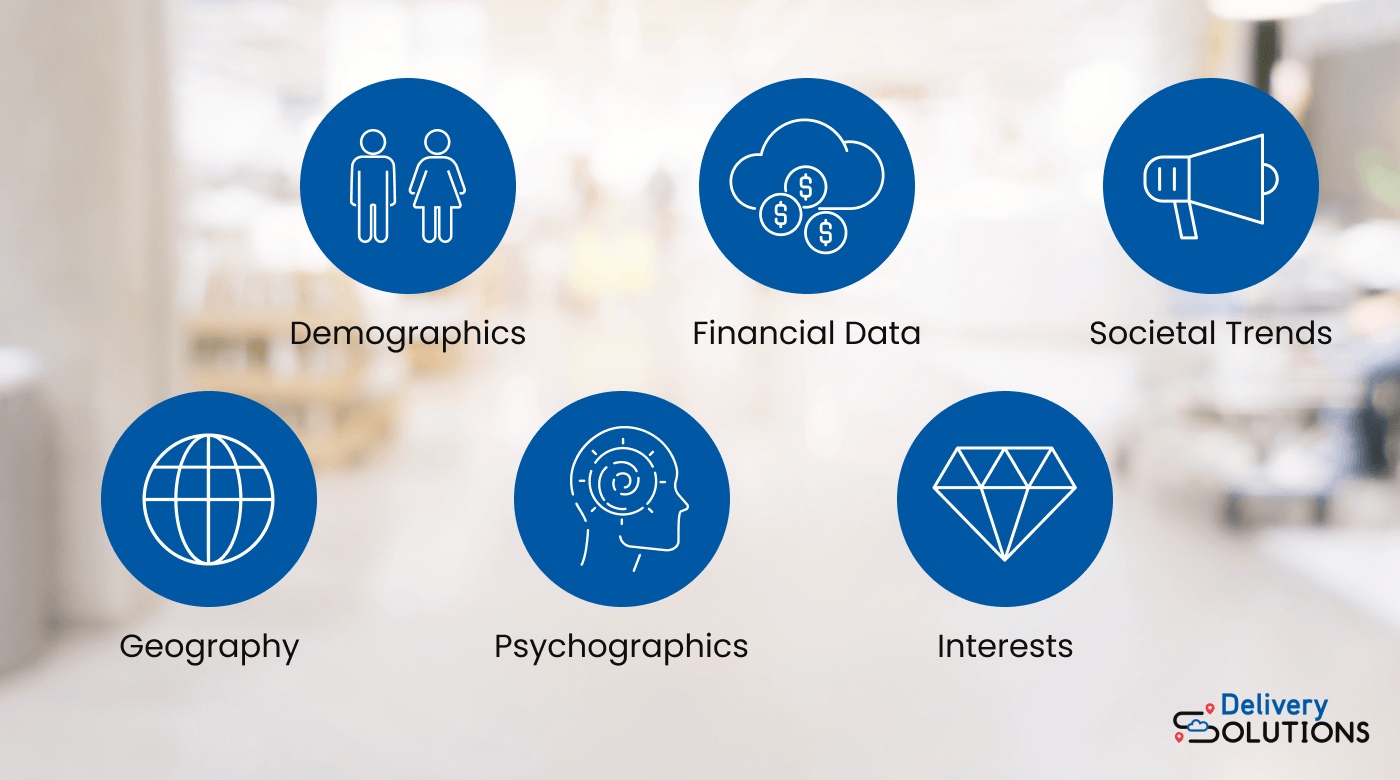As businesses grow, it can be tough to keep track of who your customer is.
After all, people are buying from different channels (whether it's online or in retail), and some of the data might not be getting back to you.
Plus, if you’re selling internationally, the type of customer you’re marketing to might vary by region.
Businesses must make a constant effort to keep a pulse on their customers and understand what consumers are asking for.
That’s where a consumer behavior analysis can help.
In this article, we’ll cover the importance of a consumer behavior analysis and how you can conduct one to scale your business more effectively.
Before we begin, let's define consumer behavior analysis so we are all on the same page.
What is consumer behavior analysis?
A consumer behavior analysis is a thorough investigation backed by data and qualitative findings about how your customers engage with your company and behave.
It’s a deeper look at the customer buying process as well as some of the buying motivations your customers have before they interact with your company.

Businesses should routinely conduct a consumer behavior analysis to understand who is buying and why they are buying.
Think of it as a map guiding your business toward your coveted customers. The analysis will help you market and position your product in a way that resonates with your customers.
If businesses understand their customers, they can more effectively reach them and deliver a product and buying experience that consumers will enjoy.
In addition, consumer behavior analysis can identify various phases of the buying process that need to be optimized.
A consumer behavior analysis isn’t just a busy-work assignment, though.
Consumers expect that businesses know their habits, wants, and desires.
In fact, research shows that more than 70% of customers expect the employees at the company they are interacting with to understand their issues and have the full context of their situation.
By performing a consumer behavior analysis, you'll position your business for future success.
It can help make you more nimble than your competitors and guide the company toward the desires of your target consumers.
Beyond this, let’s dive into some of the top reasons that a business should conduct consumer behavior analyses.
Why should businesses conduct consumer behavior analyses?
Is a consumer behavior analysis an essential tool for every business? If you conduct your analysis correctly, you will be able to extract essential insights.
The value of consumer behavior analyses is that they are actionable.
You can use the insights to drive key business decisions across marketing, product, and customer experience.
There are five key benefits to conducting a consumer behavior analysis: segmentation, targeted marketing, funnel optimization, retention, and product development.

1. Segmentation
A consumer behavior analysis will enable you to break down different segments of your audience based on a variety of factors.
You can group consumers by interests, geographic, demographic, or psychographic traits.
These segments will enable you to create meaningful personas about your customers to supercharge your marketing efforts.
For businesses with thousands or even billions of data points, segments help companies make sense of their customers.
It can be overwhelming to try to find the needle in the haystack of data. With segments, your data becomes a bit more valuable and easier to digest.
2. Targeted marketing
How can you market if you don’t understand your customer?
With rich consumer behavior insights, you can target similar audiences more effectively.
You can begin to personalize your marketing efforts with dynamic copy, relevant advertisements, and enhanced data-driven targeting.
As you become more informed about your customer’s likes and dislikes, you can evolve your marketing strategy in a way that's more relevant to them.
This will ultimately lead to more conversions and increased e-commerce revenue.
3. Funnel optimization
No funnel is perfect. Each one has room for improvement.
By evaluating the customer buying process and analyzing their behavior, you can identify areas where you need to optimize your funnel.
Optimizing your funnel can increase your ability to reach and convert new customers.
Most importantly: you can identify any leaks in your funnel where you might be losing business opportunities.
Perhaps you have a piece of content that isn’t performing well or a stale header image that doesn’t align with your customer’s expectations.
This is your chance to swap those resources out and enhance the experience in hopes of winning more business.
Small adjustments to your funnel can still have a profound impact on your bottom line.
4. Retention
With a sound understanding of your customers’ needs and wants, you can educate them on how your product will help after they buy.
Consumer behavior isn’t just about what customers do before they buy. Instead, you need to understand how they are using your product.
You might find out that some need more knowledge about certain aspects of your product. You can create these resources and provide them to customers at critical post-purchase points.
5. Product development
You can craft the next iteration of your product in alignment with your consumer’s desires.
Businesses that don’t conduct a consumer behavior analysis will fall behind the competition and risk alienating their customer base.
If you don’t listen to customers and have a pulse on consumer behavior, you might be creating the wrong product that'll fall flat in the market.
So as you’re conducting your consumer behavior analysis, you might be wondering: are there any internal or external factors that influence consumer behavior?
By understanding these factors, you can look out for unique trends in your data.
What factors influence consumer behavior?
Everyone is different and has unique motivations for buying and using a product or service.
With a thorough consumer behavior analysis, you can begin to uncover unique threads and similarities that unite your customers.

Six of the most common factors that influence consumer behavior include:
- Geography: Where does the consumer live?
- Demographics: What age and gender are the consumers?
- Psychographics: What are their values?
- Financial Data: What is their household income?
- Interests: What is their personality like? How do they spend their time? What brands do they like?
- Societal Trends: What cultural moments are happening in the world currently? What are the latest trends and fads?
In your consumer behavior analysis, you should discover which of the above factors has the most impact on your audience.
You may find that it is a combination of a few factors, or some are more significant than others.
However, you should remember that it is important not to take an all-or-nothing approach. There are different segments of your audience that might have different behaviors.
Your marketing, product, and customer success efforts should be focused yet flexible to reach the most important segments of your audience.
With a thorough consumer behavior analysis, you’ll begin to understand not only more about your customers’ habits but how you can better serve them.
How to conduct a consumer behavior analysis
A customer behavior analysis may sound intimidating at first. However, if you break it down into simple steps, it can be manageable for even the smallest teams.
To start conducting your consumer behavior analysis, you should follow these key steps: unify your data, segment your audiences, gather qualitative customer data, and analyze and test your insights.
1. Unify your quantitative data.
Start by bringing all your data together.
Most businesses use a variety of software platforms to collect and store data. If the data is kept in silos, you risk not having a complete picture of your customer.
Unify your data across all different channels. This includes purchasing, social, web traffic, customer journey, behavioral data, and more.
The easiest way to unify the data is to connect multiple sources to a customer relationship manager (CRM) or a data management platform (DMP).
Each data source can offer a new way to look at your customers. That’s why it’s essential to bring all your various data points together before beginning.
2. Segment your audiences.
Once your data is unified, begin to look at broad characteristics that group together your audiences. These groups, or segments, can be defined in many ways.

Consider creating segments based on:
- Personal Identifiable Data: Who are they? Consider age, gender, state, and household income.
- Customer Habits: How do they use your product?
- Use Cases: Why do they use your product?
It’s important to have multiple different segments to examine. Don’t worry if a customer falls into more than one segment.
You are looking at your customers holistically from almost every angle. Thus, you should be able to answer the basics about them: who they are, what their motivations are, what their habits are, and how they are engaging with your product and company.
Make sure your segments aren’t too broad. Narrow in when possible while teasing out any unique oddities within the data.
3. Gather qualitative customer data.
You don’t want to only limit yourself to using existing first-party customer data.
Instead, you should expand your dataset by enhancing it with qualitative data. This can enhance your consumer behavior analysis and provide a fresh perspective straight from the source.
There are a variety of ways you can collect qualitative customer data.
Some of the most common ones include:
- Surveys: Send out a survey to your existing customers via email and collect open-ended responses about your customer’s experiences with your product or service.
- Interviews: Reach out to a random sampling of your customers and ask them 1:1 about their experience with your company.
- Focus Groups: Gather a few of your customers in a room to openly discuss your business.
Don’t forget: quantitative data doesn’t always tell the complete picture.
By collecting qualitative data and adding it to your segments, you are enhancing your overall dataset and including valuable information that you might have missed.
For example, you might be hitting it out of the park with your product but falling short on delivery management. Your customers will share their experiences and combat any blind spots.
Now that you have all of your data compiled and your segments complete, it’s time to do one of the most important steps: analyze and test your insights in a marketing campaign.
4. Analyze and test your insights in a marketing campaign.
First, begin by analyzing the segments and data.
Consider looking for answers to the following questions:
- Are there any immediate insights that stand out to you?
- What are the common threads that unite the segments?
- What type of customer is your most valuable buyer?
- Where are most of your customers from?
- What personas can you create to bring different segments to life?
- Are there any places in your funnel where customers are getting stuck?
- Are there any aspects of your product that customers are confused by?
Once you have your data-backed insights, it’s time to put them into action.
Only data that you can act upon is valuable. Consider how you can enhance your marketing, product roadmap, funnel, or customer support based on your findings.
You might identify a new audience or realize you need to simplify your return process.
Use some of the segments to create personalized messaging that'll appeal to them. Test these ads in a campaign and compare the results.
If the results aren’t what you had hoped for, you might need to go back and dig deeper into your consumer behavior analysis to understand more about your customers.
With actionable insights that are accurate at your fingertips, you can begin to align your business more closely to your target customers’ desires and scale accordingly.
Conclusion
Consumer behavior analysis is an important process for every business to conduct.
By taking the time and completing a thorough analysis, you can understand your customers on a deeper level and use the insights to reach more.
Plus, you can personalize your marketing and customer service efforts while ultimately improving retention rates and lifetime value.
Leverage Delivery Solutions and contact us to learn more about your customers and deliver a personalized logistics experience from start to finish.
Ryan Caldarone
Ryan is a Sr. Digital Marketing Manager with over ten years of experience in B2B eCommerce, specializing in brand storytelling and content. Having contributed to hundreds of creative projects for SMBs and startups across the tech, energy, and fine arts sectors, Ryan brings diverse perspectives.
Topics from this blog: Delivery Efficiency Ecommerce
